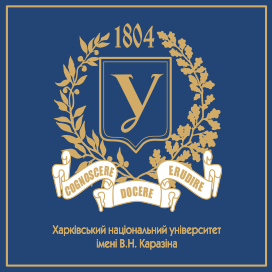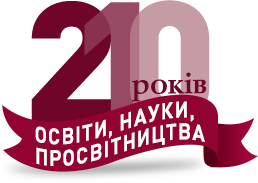-
King of Beasts as a Gift
Since its foundation Kharkiv University has been receiving a lot of gifts. Thus, its founder Vasyl Karazin donated a considerable book collection to its library. The personal gift of Seweryn Potocki in 1804 served as the basis for the University numismatic collection that eventually became the best university collection of the kind in the Russian Empire. The famous botanist, Honorary Academician Nikolai Turczaninow presented the University with his unique collection of plants and library. And this list can go on endlessly.
Among these gifts there were unusual ones. Thus, when Dmytro Bahalii was President of the University, in September 1909, a famous sugar manufacturer, one of the best known in Russia benefactors, Pavel Kharitonenko, presented the alma mater with a five-month-old lion cub. The little king of beasts was sent to the South-Russian Society for Acclimatization in the University Garden.University Aquarium Opening
Today, it may seem impossible to imagine the city life without the open-for-the-public ‘homes’ of maritime animals such as dolphinarium, oceanarium, and numerous aquaria, etc. Yet, communication with underwater inhabitants has not always been so affordable. Let us say that in 1930s even a small aquarium was attracted remarkable attention.
That is why the opening of a marine aquarium at the School of Biology of Kharkiv University in December 1937 became an event of city importance. The aquarium, in particular featured sea chrysanthemums actiniae wavering in the water, crabs moving around among big rocks. One of the crabs bore a sea acorn, another crustacea representative... The aquarium opening had an educational purpose. Then, students of the School of Biology studied maritime animals using exclusively the specimens preserved in alcohol, which could not give them a complete picture of the peculiarities of life and activity of the underwater dwellers. So, the aquarium opening enabled the students to visually study the live sea fauna.The Best Choir in the City
In 1853 the University created a student choir at the St. Antony House Temple of the University. It existed for almost 20 years and was considered to be the best choir in the city. Therefore, the University Church enjoyed wide popularity.
A prominent figure of the Russian stage, Nikolai Sinelnikov, sang in the student choir since the autumn of 1873. He wrote about this in his memories: “My reduced circumstances forced me to join the student choir, which is very popular in Kharkiv. We sang on holidays and holiday eves in churches, gave concerts, performed Ukrainian old-time songs.” The participating students received modest payment for their performances. Since 1875 the best at that time Latinsky’s choir sang at Kharkiv University Church, since 1885 — Turoverov’s choir. Then some students continued to sing at the church choir (some of them were relieved of the tuition fee)."Expel All!"
An interesting incident happened when the Emperor Nicholas I visited the University of Kharkiv in spring 1850. Petro Veinberg, future lecturer of St. Petersburg University, wrote about it in his memoirs: "At that time one of the students at the University was a Sibiliov, a solidly built and tall young man with almost flame-coloured hair that looked like coarse bristle, and with big and coarse whiskers that were not forbidden though.’ Enraged at such appearance, the Emperor ordered: “Expel all, may only one be left but he will look like a man!’”
After that incident, quoting the author of the memoirs, the University initiated a purge that resulted in many students expelled. The next year the Emperor came to Kharkiv again, but he did not wish to visit the University convinced that his order had been executed.Kharkiv University Street
In the Soviet period there emerged a new phenomenon in the social and economic life of students. It was student building movement that framed itself on the virgin soil at the end of 1950s. Kharkiv University students of course did not stay on the sidelines of the phenomenon. They constructed roads, heating mains, houses, and even whole streets. One of such streets built in 1956 by the efforts of the students from the first student construction brigade of Kharkiv University still exists. It bears the name of Kharkiv University.
Number 77, Green
Pre-revolutionary universities are known to have had the position of inspector whose duty was to monitor students’ behavior. This position at the University of Kharkiv was at one time held by a Grippenberg, a retired artillery colonel, who decided to assign students special numbers to prevent disorders. A University student, Mykola Levakovsky, recalls this episode: “We were assigned numbers in the following fashion: when we were at a lecture and left our greatcoats and caps in the so-called assembly hall, the tailor came with ready-made numbers cut out of woolen cloth and sewed them onto everyone’s greatcoat and cup. For some reason these numbers for different schools were of different color.
I still remember: I was 77, green. The purpose of this numbering was to enable the sub-inspectors to the last names of the students caught, for example, in a hotel. But this ruse de guerre was of little effect. The students did not leave their greatcoats on entry, or at the general hall, and therefore mischief continued.”Student Self-Censuses: First Opinion Polls
In the late XIX century it becomes popular among students to conduct the so-called self-censuses, i. e. thematically diverse sociological surveys carried out by students themselves.
In particular, in the mid 1890s a census was taken at the School of Medicine of Kharkiv University as a practical lesson in anthropology. It was devoted to investigation of the factors positively and negatively influencing the student’s organism. In 1900 the students of the School of Law under the guidance of Professor Miklashevsky compiled a questionnaire of 50 questions. They received about 100 responses, which, however, remained unprocessed. Another questionnaire for a census of Kharkiv University students was designed on the eve of the University’s foundation centenary. On December 19, 1903, with the President Nicholas Kuplevasky’s permission, it was published as a separate edition. The questionnaire included 108 questions concerning all the aspects of the University students’ life and activities (education, family, circumstances, nutrition, health, learning, plans for the future, etc.). In 1908 the Monitor Council and the Trade Union of law students of Kharkiv University turned to the moderators of the Statistical and Economic Seminar of the School of Law with a request to work out a program of an economic census of Kharkiv University students, and veterinarian students and attendees of Higher Women’s Courses. The request received favorable response. The questionnaire consisting of 29 questions and numerous subitems concerning the respondents’ living conditions, nutrition, sickness rate, and apparel was drawn up within the practical classes in statistics. When conducting a census at the University in 1909, there were 4,279 questionnaire forms distributed, and 1,987 received, i. e. 46.4% of the respondents answered the questions. All in all, there were seven similar censuses conducted in Kharkiv.From Student Outpatient Clinic to City Student Hospital
In the early XX century Kharkiv University students, concerned with the problems of medical treatment, attempted to solve them on their own and with the help of the University faculty members and physicians. As a result, in 1910 there emerged a Society for Aid to Sick Needy Students studying at higher educational institutions of Kharkiv. Its members were Kharkiv University students (primarily, medicine students) themselves. The Society had a student outpatient clinic with 50 volunteer physicians, and one on-salary duty doctor-superintendent working there.
In 1911-1912 the clinic provided medical aid to 3,722 students. The Society also rendered domiciliary aid services. Furthermore, its members (about 3,000 people) had free and preferential places in different hospitals, sanatoria, and other similar institutions. In 1921 the Society and its outpatient clinic served as the base for P. I. Shatilov Student Hospital foundation, which keeps working today as Student Hospital No. 20.Student Orchestra and Choir: Famous Names
In the second half of the XIX century Kharkiv University had a student orchestra and choir. In 1888 their members were 25 people. The first director was Alfred von Glenn, a music school teacher. In 1890, on the invitation of Vasily Safonov, von Glenn first becomes professor, and eventually assistant to Moscow Conservatory President. Von Glenn’s followers are the world famous violoncellists Konstantin Minia-Beloruchev, Kazimierz Wiłkomirski, Gregor Piatigorsky, and others.
At a later date director the orchestra and the choir was Ivan Turoverov, a former student of the School of History and Philology of Kharkiv University. In 1908 the choir comprised 40 students. At that time the University also had an Armenian choir.Maksim Kovalevsky’s First Literary Work
In 1860s clubs self-instruction groups are becoming widespread among the intelligentsia, including students. The participants of such groups can be characterized as interested in the theoretical problems, on the one hand, and in practical activities and prospects of their transformations, on the other hand.
Maksim Kovalevsky, a student of Kharkiv University of that time, later a distinguished historian, lawyer, sociologist, ethnographer, professor of Moscow University and St. Petersburg University, academician of St. Petersburg Academy of Sciences, shared his recollections of such a group. His house hosted evening meetings that used to gather a lot of people who acquainted each other with achievements in natural sciences, medicine, history, and jurisprudence. “We all, regardless of our specialities, were interested exclusively in social matters without proceeding merely from theory,” recalled Mr. Kovalevsky. The memories of his participation in the student group for Maksim Kovalevsky are associated with his first literary work expounding Pierre-Joseph Proudhon’s views on the principle of “economic interdependence”. < >

